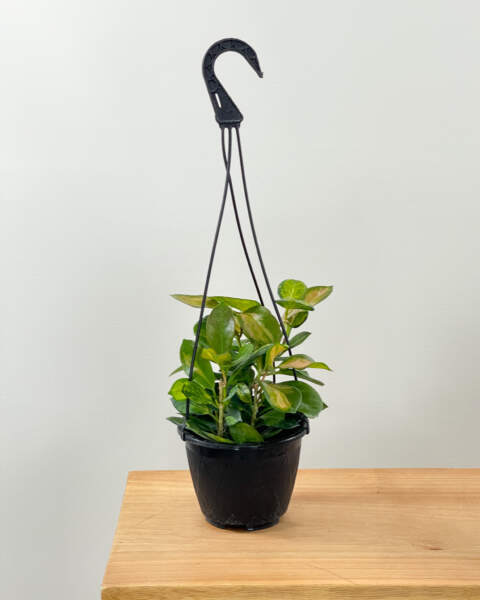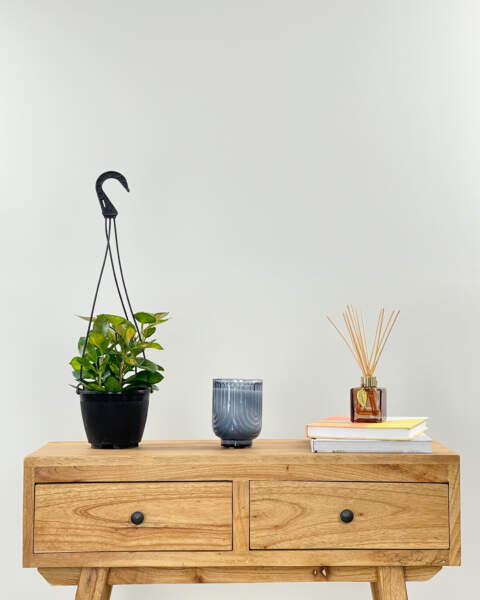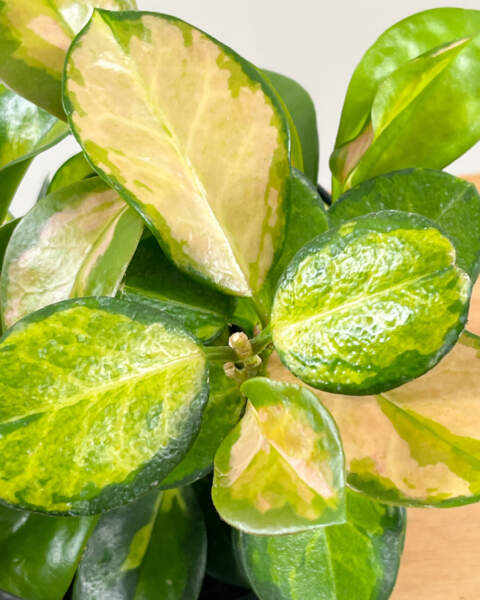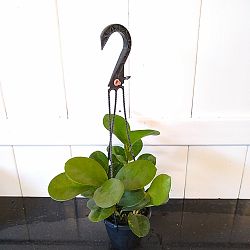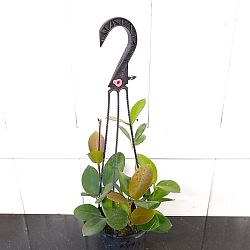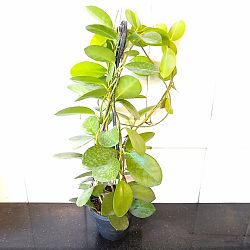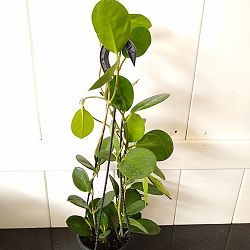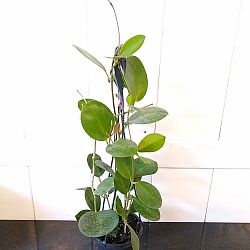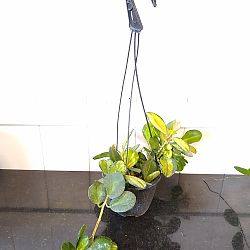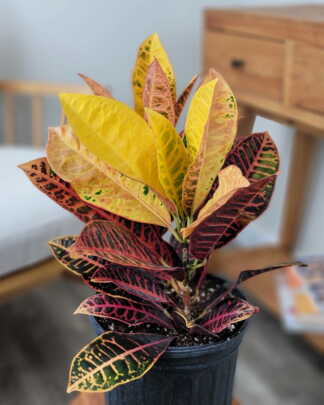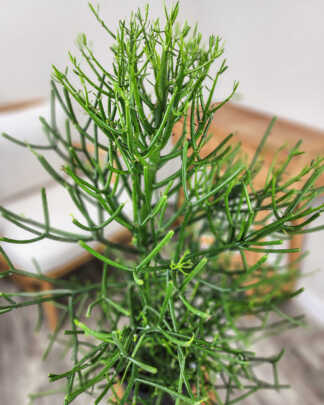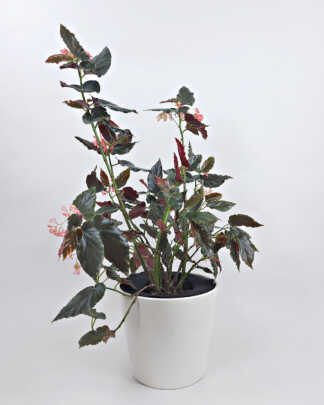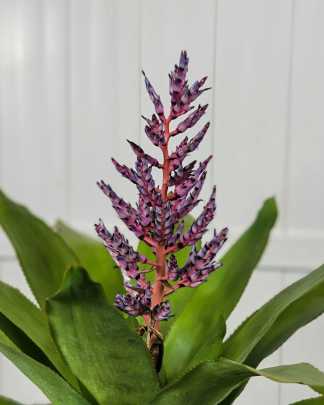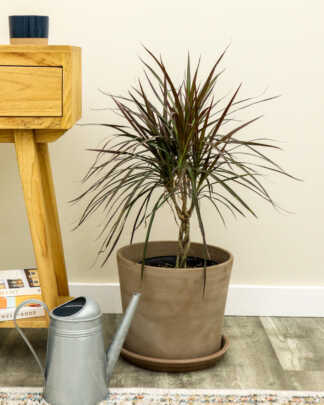Description
Beautiful Blooms Straight From the Outback
The Australian Hoya, with its glossy, thick leaves and cascading vines, is an excellent choice for adding a tropical touch to any indoor setting. Its leaves are deep green, sometimes displaying lighter variegation. The plant is known for its clusters of fragrant, star-shaped flowers that bloom under optimal conditions. These blooms are particularly striking, with a central coronal structure that is visually appealing. The Hoya Australis is not only an ornamental delight but also a relatively low-maintenance plant, making it suitable for both experienced and novice plant caretakers.
Caring for your Australian Wax Plant
The Hoya Australis’ low-maintenance nature, combined with its stunning foliage and flowers, makes it a fantastic choice for indoor gardeners. With the right conditions and care, your Hoya will be a beautiful, thriving addition to your plant collection for years to come.
Light
Lighting is a crucial aspect of caring for the Australian Hoya. It thrives in bright, indirect light. A spot near an east or west-facing window where it can receive gentle morning or late afternoon sun is ideal. Avoid direct, harsh sunlight, especially during the hot midday hours, as it can scorch the leaves. If you’re growing your Hoya indoors in a less illuminated area, consider using grow lights to provide sufficient light. Ensuring your plant receives adequate light will promote healthier growth and encourage blooming.
Water
Watering is key to Hoya Australis care. The plant prefers to dry out slightly between waterings. Check the top inch of the soil; if it feels dry, it’s time to water. Use room temperature water to avoid shocking the plant’s roots. During the winter months, reduce watering as the plant enters a dormant phase. Overwatering can lead to root rot, so it’s essential to ensure good drainage. If the leaves start to wrinkle or look deflated, this is a sign that the plant needs water.
Hoya Australis enjoys a humid environment, which can be replicated in the home by placing a humidifier nearby or using a pebble tray filled with water. Misting the plant can also increase humidity but do it sparingly to prevent leaf spot diseases.
Soil
The Australian Hoya prefers well-draining soil to prevent water from accumulating around the roots. A mix of regular potting soil with orchid bark, perlite, and charcoal is ideal. This combination provides the aeration and drainage that Hoyas love. Repotting should be done every two to three years or when the plant becomes root-bound. However, it’s worth noting that Hoyas often bloom more prolifically when slightly root-bound. When repotting, choose a pot that’s only slightly larger than the previous one, as a too-large pot can lead to water retention and root rot.
Fertilizing
Fertilize your Hoya Australis during the growing season (spring and summer) with a balanced, water-soluble fertilizer, diluted to half the recommended strength. Fertilize once a month to encourage growth and flowering. Avoid fertilizing in the fall and winter when the plant’s growth naturally slows down. Be cautious not to over-fertilize, as this can lead to salt buildup in the soil, which can harm the roots. If the leaves turn yellow or the plant seems lackluster, it might need a nutrient boost, but always approach fertilizing conservatively.
Pruning and Maintenance
Pruning is not typically necessary for Hoya Australis, but you can prune to control its size or remove unhealthy growth. Use clean, sharp scissors or pruning shears, and make cuts just above a node (where the leaf meets the stem). Avoid removing the long tendrils, as these are where new leaves and flowers will develop. Regularly wipe the leaves with a damp cloth to remove dust, which can hinder photosynthesis. This also allows you to inspect the plant for pests such as mealybugs or spider mites, which can be treated with insecticidal soap or neem oil.
Propagation
To propagate, cut a stem with at least two nodes. Let the cut end dry for a day, then plant it in a well-draining soil mix. Keep the soil slightly moist and place the pot in a warm, bright spot. Rooting can take several weeks, so patience is key.
Common Problems and Issues
If your Hoya’s leaves are turning yellow, it could be due to overwatering or poor drainage. Ensure the pot has adequate drainage holes and allow the soil to dry out between waterings. Brown leaf tips can indicate low humidity, so consider increasing humidity around the plant. Regular inspections for pests and treating any infestations early will keep your Hoya healthy.

